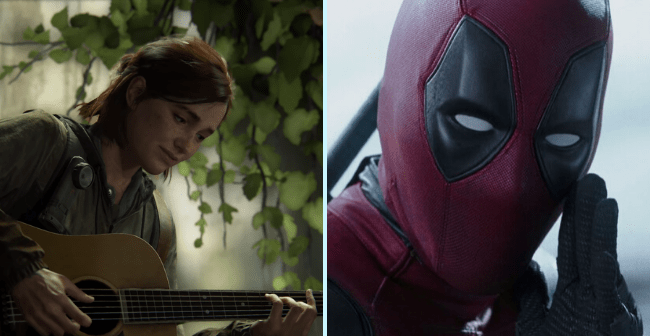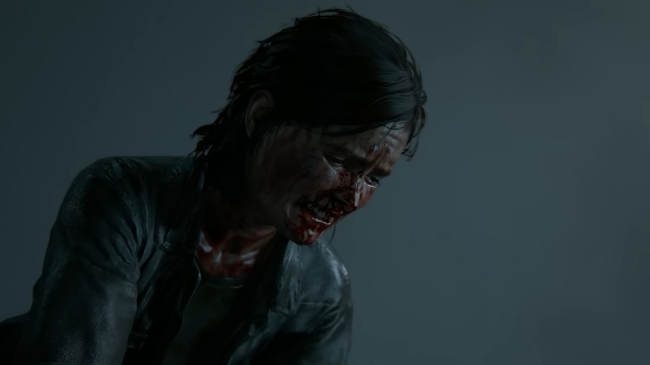Relationships are the core of what makes The Last of Us Part II such a visceral gaming experience. The violence and anguish of its most talked-about scenes would mean nothing without the quieter moments where Naughty Dog’s superb motion capture technology and some of the best character performances the industry has ever seen combine to create true intimacy between its characters. It’s also why the most profound, moving scene in The Last of Us Part II is one of its least assuming–an optional moment that you can easily miss; one that shares emotional connections with Deadpool 2, a Marvel Comics movie that knows all about combining ultraviolence and emotional sincerity.
The Last of Us Part II Spoilers ahead, obviously.
Licensed music is an important tool in storytelling because it becomes shorthand for emotions or feelings that the story is trying to convey to the audience as quickly as possible. Memorable songs stick in your head and give the scene all of its emotional clout because, by and large, the audience already has thoughts and feelings about a well-known song (or the song just naturally drives a specific emotional response). It’s why I’d get an “Aw, yeah” kind of feeling when Kanye West’s “Power” starts up in Saints Row The Third or why I instantly teared up at the end of Life Is Strange when I heard “Spanish Saraha” by Foals. Popular music can also be used in a way that changes the tone or meaning of the original song, so while there’s still familiarity there it now has a different connotation, like when Elizabeth sings the Christian hymn “Will The Circle Be Unbroken?” in Bioshock Infinite.
This reinterpretation of a popular song is especially powerful as a storytelling tool, and one that was put to shockingly emotional use in the 2018 Marvel box office hit Deadpool 2. Now, you might be asking yourself “What was so emotional about a fourth-wall-breaking movie with numerous decapitations, threats of child violence, and a scene where an invisible Brad Pitt gets electrocuted to death?” And the answer, as we just said, has to do with relationships and, as with most things, A-ha. The band A-ha, that is, and their 1985 hit single “Take On Me.”
When most people think of this song it’s for two reasons: The iconic, if not ridiculous falsetto in the chorus and its ground-breaking music video which recently received a 4K remaster. And those two things really sell the song short, as the lyrics portray a ballad about fleeting love and the risks we put ourselves in by becoming emotionally attached to another person. The emotional message of the song somewhat gets lost in the blazing 80’s synth and cheese of it all, which is why the song stands out so much when repurposed as an acoustic ballad, just like in Deadpool 2 and The Last of Us Part II.
The connection between the two isn’t simply because they use the same song, but in the ways that the song is used to show layers of loss and love. The version of the song in Deadpool 2 is actually from an MTV Unplugged performance that the original band did in 2017. The use of “Take On Me” at the end of the film not only conveys the sense of loss Wade feels over the death of his lover but is also about the non-transient nature of his own existence and his inability to die seemingly coming to an end as he’s reunited with Vanessa. It’s a moment that speaks to feelings of leaving someone behind but also being stuck in a place and the rashness of caring for someone.
All of this sounds familiar to anyone that’s played The Last of Us as a franchise. The story of Part II is that of the vicious cycle of revenge that happens from rash emotional decisions and said decisions coming back to haunt. However, and much like Take On Me, the story of The Last of Us is about relationships where people struggle to speak honestly and openly until it’s too late. From Tess and Joel, Joel and Ellie, Joel and Tommy, Ellie and Dina, Dina and Jessie, and more, all of these relationships are seemingly haunted by a specter of trying to protect someone to the point of harm.
Which brings us to Seattle, a music shop, and an optional scene that you might just miss if you aren’t the industrious “pick up everything in sight” type. The Valient Music Store is one of the first abandoned shops you come across once Ellie and Dina arrive. Upstairs, tucked away in a room is a guitar, hearkening back to scenes just a few hours before in which Joel attempts to find the words of apology he’s looking for but can’t quite reach. Joel is a broken man who made a decision out of love and became a monster in the process, but it was the only decision he felt was possible.
It was a decision that led to his own death and sets Ellie down her own path towards personal destruction. But before that, there’s simply loss, pain, and regret on Ellie’s part. Angry over the truth Joel hid but also feeling remorse because so much was left unsaid between them. And at the same time as this, her own relationship with Dina in a state of flux and very much in that early part of any relationship where it’s new and being vulnerable is terrifying. It all leads to the game’s most emotionally layered scene and a musical performance that left my skin vibrating and brought me to tears, even after multiple views.
This scene is a pure powerhouse of raw emotion, subtlety, and the vulnerability that neither Ellie nor Joel could ever show one another. What really drives it home, however, is the performances both by the actors but from the motion-capture technology deployed by Naughty Dog. The quiet eye roll and lifting of the brows when Ellie sings “It’s no better to be safe than sorry,” and the emotion that cycles through Dina’s face through various points of the song just brings so much to one scene that could very well just be seen as a licensed music one-off.
And while there’s a lot of emotional and raw nerves and shock to be had in The Last of Us Part II, the moment that continues to stick with me most is an optional and quiet few minutes of reflection, regret, and new love inside a music shop.





